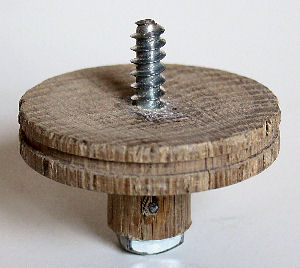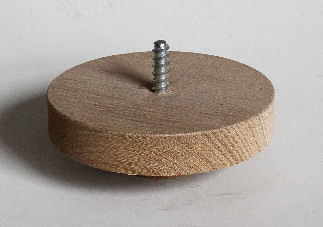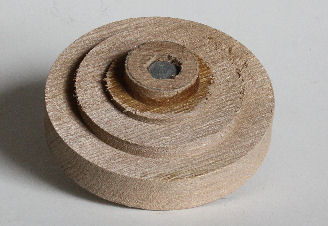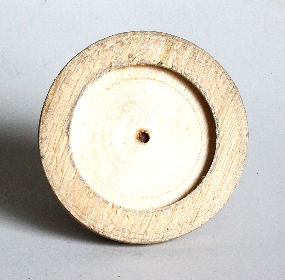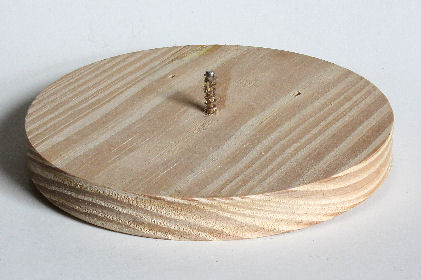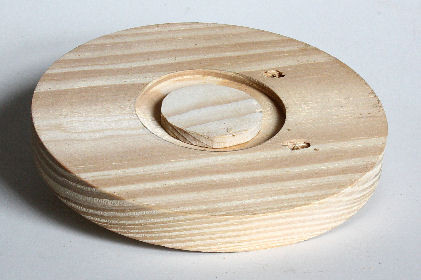|
The Woodturner's Workshop
Home Bespoke chucksShown below are a number of chucks made for different purposes
This is a chuck for general use and the one I use most often. It fits into a typical 4 jaw chuck. It employs a coach screw that has a good strong thread. The length of the small cylidrical section is set so that the required amount of thread is allowed to protude beyond the face of the chuck. There is a pin that goes through both the wood and the screw to prevent the latter unscrewing when items are attached. Without the pin it is possible that the screw could wind its way out of the chuck when the woork piece is attached. This happened to me with one of the first chucks I made. This is potentially very dangerous because the work piece may be held by only a few threads and could be thrown off the lathe when an attempt is made to turn it.
This is a another general purpose chuck. The wooden disk is slightly larger in diameter than that in the one above but the coach screw is smaller. A small wooden block, cut to fit the head of the screw, was glued on after the screw was inserted to stop it unscrewing.
I use this chuck for making apples and pears. As the screw is slender I also use tail-stock support most of the time.
The reason for a slender screw is that it requires only a small hole which is drilled at the top of the workpiece. When the work is completed a small turning inserted into this hole to create the stem. The bottom of the chuck fits onto the expanding jaws of a chuck. It could eqally well be formed into a spigot.
The screw is an ordinary woodscrew with a parallel thread. The head was cut off after insertion. The piece of leather is to prevent damage to the workpiece. Maximum diameter: 76mm (3 ins)
This chuck is about 5" in diameter. An ordinary woodscrew has been driven into the centre and the head sawn off. I use this for turning the bases of things like kitchen roll holders. The screw can be very slender because its function is to hold the work piece tighlty onto the chuck. This creates sufficient friction to hold the work piece in place. As a consequence the only force on the screw is that produced by tension, there is no lateral force on the screw. Because the screw is slender it requires only a very small hole which is barely noticeable in the finished product. These two chucks are clearly very similar. The main difference is that they use different types of screw. The top one uses a masonry screw. This has a coarser thread than an ordinary woodscrew which can be an advantage. The bottom one uses a coach screw. Neither screw is locked but I ran super glue over the screws before inserting them. In both cases more of the thread is in the chuck than there will be in the work piece. As a consequnce it is unlikely that they will unscrew when the work piece is attached. Nevertheless if I ever use them again I will lock the screws by one of the methods used in the first two chucks shown above. 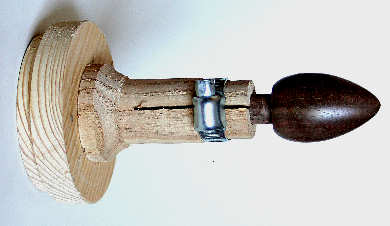
This chuck is used to complete the turning of a stopper for the needle case. The stopper is first turned in a 4 jaw chuck with the bottom end outwards. The spigot and as much as possible of the rest of it is turned. It is then held in this chuck whilst the upper part is finished. |
